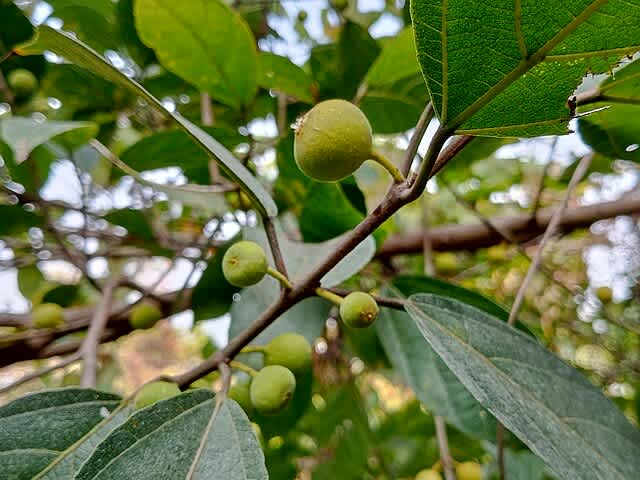Semantic Series 2: 无花果树(fig tree)
August 20th, 2023

Wikimedia Commons
One of the most well-known stories in the Bible is about Jesus 'cursing' the fig tree. The word 'cursing' used to describe the event often leads to the interpretation of the story as a depiction of the harsh consequence for a Christian who doesn't bear "fruit" in their life.
远远的看见一棵无花果树,树上有叶子,就往那里去,或者在树上可以找著什么。到了树下,竟找不著什么,不过有叶子,因为不是收无花果的时候。耶稣就对树说:从今以后,永没有人吃你的果子。他的门徒也听见了。(马可福音 11:13-14 Chinese Union Bible) And seeing in the distance a fig tree in leaf, he went to see if he could find anything on it. When he came to it, he found nothing but leaves, for it was not the season for figs. And he said to it, “May no one ever eat fruit from you again.” And his disciples heard it. (Mark 11:13-14 Chinese Union Bible) |
However, the Chinese translation draws our attention to another, lesser-talked-about fig tree event in the Bible, found in John 1:48. In this passage, Jesus said to Nathanael, "Before Philip called you, when you were under the fig tree, I saw you." Similarly, in John 1:50, Jesus said to Nathanael, "I saw you under the fig tree, do you believe?" Both questions were in response to Nathanael's inquiry about how Jesus knew him.
The Chinese term for fig tree, 无花果树, holds intriguing significance. The character 无 negates the antecedent concept, while 花 represents the antecedent being negated, and 果树 is the subject being described. Thus, the description equates to "the 'flowerless fruit' tree." This term stems from the observation of the unique characteristic of figs, where the flowers are enclosed within the fruit. Consequently, it might seem as though the tree produces fruit directly from its branches without observable flowers. Unlike other fruit-bearing trees, there are no discernible flowers before the fruit develops. To someone unaware of this fact, the tree might appear fruitless.
This fact adds depth to the interpretation of John 1:48. Jesus mentioned twice that he saw Nathanael under the fig tree. Therefore, it's reasonable to infer that Jesus is making a profound point about the connection between Nathanael and the fig tree. Nathanael was astonished at how Jesus knew him before he became a disciple. In the absence of conspicuous flowers as evidence, it's challenging for an ordinary person to predict if fruit will be produced. Yet, not for Jesus. As the omniscient Son of God, He could perceive that Nathanael would bear fruit in his service as Jesus' disciple.
This perspective also sheds new light on Mark 11:13-14. The lack of fruit-bearing was not an arbitrary curse. Rather, the imagery of the 无花果树 emphasizes that Jesus sees the hidden fruit.
I conclude this reflection with one more intriguing metaphor that the Chinese language unveils. The fig tree's lack of showy flowers creates the illusion that the tree directly produces fruit from its branches without visible flowers. In Isaiah 11:1-2, Jesus described Himself as the "branch." Specifically, a branch from the line of Jesse that will bear fruit. The description in Isaiah 11:1-2 evokes the image of fruit being borne directly from the branch. Thus, Jesus would comprehend the way fruit is borne, directly from Him as the branch—similarly to how the fig tree's fruits form, how Nathanael bore fruit in his ministry, and by God's will, how we would as well.